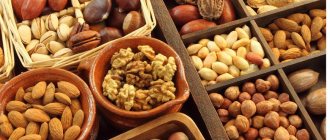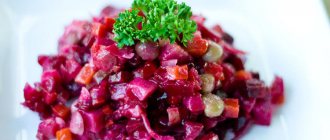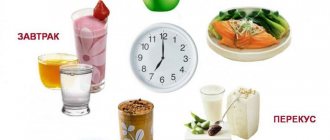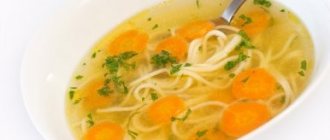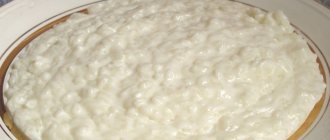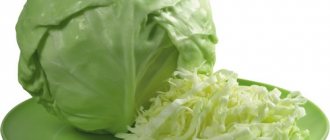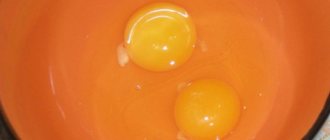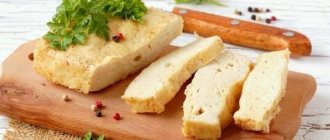The diet for acute and chronic pancreatitis (inflammation of the pancreas) is built according to strict rules. The consumption of many foods must be limited or completely excluded from the diet - at least until the end of the exacerbation period. But this does not mean that the diet menu should consist only of unsalted cereals and soups cooked in water. The patient's table can be varied with various dishes, including different versions of casseroles, which will be equally useful for both adults and children. Simple and tasty recipes are offered in this article.
What is pancreatitis
Pancreatitis is an inflammatory process in the pancreas (a vital organ that is responsible for the normal functioning of the entire body). They are usually accompanied by sharp, paroxysmal pain in the organ area.
Over time, a person suffers from this more and more often. Painful sensations become more intense and unpleasant. This interferes with a person’s normal life, and he begins to look for ways to fight pancreatitis. Then he is forced to seek help from doctors who prescribe treatment and a special diet. It often includes cottage cheese casserole. It is very useful for pancreatitis.
Achieved effects
The diet of patients with pancreatitis should include the consumption of foods with a low percentage of fat content and proteins of animal origin. Experts emphasize the importance of observing this principle when creating a diet. This is explained by the fact that, in addition to the substances and microelements necessary for the body, it ensures easier and more complete absorption of the beneficial components of food.
By including casseroles in a patient’s diet, you can achieve:
- reducing the intensity of inflammatory processes;
- production of protease inhibitors;
- reducing the area of localization of destructive changes;
- activation of the patient's immune system.
In addition to the listed effects, eating the dish can reduce the risk of pancreatitis.
Diet for pancreatitis: what not to eat
Often, a timely visit to a doctor can greatly alleviate the patient’s condition if quality therapy is started. However, pancreatitis is a disease that cannot be completely cured. It must be constantly monitored so that the symptoms do not worsen. So, doctors recommend adhering to a special diet for such a diagnosis.
It is necessary to exclude the following foods from the diet:
- spicy, highly salty foods;
- excessively fatty foods;
- fried foods;
- sugar, chocolate and other sweets;
- carbonated drinks;
- smoked meats (sausages, fish, cheeses).
Main signs of the disease
Pancreatitis is a disease characterized by inflammation of the pancreas. Anyone can get this disease, because often its development is caused by an unhealthy lifestyle, smoking, frequent consumption of alcoholic beverages, and an unhealthy diet. Pancreatitis can occur in acute and chronic forms. Both conditions are characterized by pain in the stomach, which increases many times over if the patient has eaten something spicy, fried or fatty.
In addition, patients with pancreatitis often experience the following symptoms:
- nausea;
- vomit;
- heartburn;
- flatulence;
- bloating;
- elevated temperature;
- constipation or diarrhea;
- weight loss;
- loss of appetite;
- sweating
To avoid discomfort associated with the development of the inflammatory process, all patients suffering from acute or chronic forms of pancreatitis are forced to adhere to a gentle diet, which will prevent the deterioration of the patient’s condition and slightly alleviate the stabbing pain in the abdomen.
Diet for pancreatitis: what you can and should eat
Food products that are allowed for pancreatitis are not only porridge and steamed meat. This diet is quite varied and nutritious. You just need to find time to cook. So, with pancreatitis you need to eat:
- protein in sufficient quantities: beef, chicken, rabbit, turkey, pork, but lean.
Is it possible to have cottage cheese casserole for pancreatitis? Yes, if the cottage cheese is low-fat and fresh. It is so useful that it must be used without fail.
Many people love milk very much, some have a hard time being separated from it, even for a while. Therefore, it is allowed to be added to soup, to jelly, to the same cottage cheese casserole. For pancreatitis, a casserole in which cottage cheese is diluted with milk will be very useful.
Fermented milk products will be incredibly valuable for pancreatitis; they have a beneficial effect on the stomach and pancreas. They also restore intestinal microflora well.
Fruits should also be in the diet of a person following such a diet. These could be apples (not very sour), bananas. It is better to bake apples or make a salad from them with the addition of carrots.
To drink, you can use herbal teas, milk tea, and sweet juices.
Rules of use
Processing foods in the oven will help preserve nutritional value, as it minimizes the destruction of vitamins, proteins and microelements, which is very important for pancreatitis. Gastroenterologists note the high digestibility of such dishes immediately after the symptoms of inflammation disappear.
It is recommended to include cottage cheese-based products for pancreatitis several days after the end of the acute phase of the disease. The permissible fat content of a fermented milk product should not exceed 3% with an acidity not exceeding 170°Turner, however, to prevent a possible negative reaction from the body, it is better to use low-fat cottage cheese.
In the chronic phase of the disease, the number of permitted products increases significantly; the consumption of casseroles and soufflés made from cottage cheese with the addition of berries, dried fruits and honey is allowed.
Cottage cheese casserole for pancreatitis: recipe
The casserole can be prepared in many ways, with the addition of a variety of ingredients. You should choose according to your taste, then build on the products in the refrigerator. Many housewives prepare this dish salty, but the classic casserole is sweet.
Cottage cheese casserole in the oven for pancreatitis is prepared easily and quickly. For this you need to take:
- fresh cottage cheese 300-400 g;
- chicken egg - 2 pcs.;
- powdered sugar - 100 g;
- semolina 80-90 g;
- yogurt without additives 70 - 100 g;
- baking powder for dough - 5 g;
- a piece of butter for greasing the pan.
In a deep plate, mix cottage cheese with eggs. You need to stir until you get a mass similar to store-bought curd mass. Then add powdered sugar and mix again. Add yogurt and baking powder. Now pour in the semolina and mix again. Grease the mold with a piece of butter and place the dough into it. Cottage cheese casserole for pancreatitis of the pancreas should be cooked at 180 °C for 30-40 minutes. Check readiness with a toothpick. If it remains dry, the dish is ready. Take it out, wait until it cools down, cut it. This recipe for oven-baked cottage cheese casserole (the dish is shown for pancreatitis) can be remembered and implemented by anyone who has the desire and the necessary ingredients.
Caution: contraindications
Cottage cheese casserole for pancreatitis, as well as any other dishes made from this product, are allowed only with a stable improvement in the condition. There are often cases when, when eating dishes made from high-fat cottage cheese, a patient experiences such unpleasant phenomena as:
- nausea;
- diarrhea;
- flatulence;
- pain in the pancreas.
Too much cottage cheese eaten at one time can also cause discomfort in the patient. If any of the listed symptoms appear, you should immediately stop eating pudding, casserole for pancreatitis, and even cottage cheese in its pure form. Urgent consultation with a specialist is also required to prevent exacerbation of the disease.
Excessive consumption of cottage cheese is fraught with a recurrence of an attack of pancreatitis.
Healthy casserole in a slow cooker
Cottage cheese casserole, according to nutritionists, is a truly healthy and nutritious dish that can be prepared in different ways. Cottage cheese casserole for pancreatitis in a slow cooker is a godsend for many who are on a diet.
You need to prepare it by taking:
- low-fat cottage cheese - 0.5 kg;
- chicken egg whites - 2 pcs;
- sugar - 30 g;
- sweet apple - 1 pc.;
- semolina - 50 g;
- water - 30 ml;
- baking powder - 5 g.
Pour the semolina with water (pre-heat it to 35-40 °C), then set the cereal aside so that it swells. Beat egg whites with sugar. Peel the apples and chop them with a grater, drain the juice. Grind the cottage cheese thoroughly with a fork, adding apples and egg whites with sugar. Then add semolina. Grease the multicooker bowl with butter and place the casserole dough into it. Set the baking mode. Cottage cheese casserole (it will definitely help with pancreatitis of the pancreas) should be cooked in a slow cooker for 40-50 minutes.
Omelette and jelly recipes by Izotov and Momotov
You need to add jelly and omelet, which are healthy for the pancreas, to your daily menu.
In case of pancreatic pathologies, an omelet will be the safest of all egg-based dishes that can be. It is especially necessary and healthy to eat an omelet made from protein or quail eggs.
The omelette needs to be steamed. For 3 eggs, take 1 glass of milk and a pinch of salt.
All components are whipped and poured into a small container. It must be placed in a bowl of boiling water.
In this case, the dish with the egg-milk mixture should not touch the water. All this must be covered with a lid on top so as not to lose steam.
This method will help you cook a steamed omelette when you don’t have a steamer. The approximate time after which the omelette will be ready is 18 minutes.
Photo:
The benefits of oatmeal jelly have already been discussed above. The use of oatmeal jelly is recommended for any diseases of the digestive system (pathologies of the pancreas, cholecystitis or gastritis).
There are several recipes for oatmeal jelly.
Firstly, this is Izotov’s jelly, the preparation of which can be divided into 4 stages:
- The fermentation stage, when 100 ml of kefir and half a kilo of oatmeal are added to 3 liters of chilled boiled water. The container with the workpiece must be tightly closed and placed in a warm place for 2 days;
- The filtration stage involves filtering the mixture through a colander from the formed sediment;
- The stage at which the resulting filtrate settles for another 18 hours and is divided into 2 components: oat concentrate and kvass;
- Direct preparation of jelly. To do this, you need to take a small amount of concentrate (to taste) and mix it with two glasses of water. The resulting solution must be brought to a boil and cooked for about 5 minutes. When finishing cooking oatmeal jelly, you should add a little salt and butter.
Secondly, this is Momotov’s recipe for jelly:
- Small oat flakes (about 300 grams) should be mixed with a small amount of large flakes (four tablespoons are enough) and pour 100 grams of kefir over them. The resulting mass should be placed in a three-liter jar and the remaining space should be filled with warm water. The workpiece should be closed and placed in a warm place for two days;
- The fermented liquid must be filtered from the flakes and poured into jars. The flakes also need to be washed with two liters of water and new jars filled with the resulting mixture;
- If necessary, the prepared filtrates can be boiled until thickened and consumed.
Useful properties of cottage cheese casserole
The cottage cheese that is part of the casserole is rich in many vitamins and microelements, without which the normal functioning of the body is impossible. Among them are B vitamins, calcium, selenium, copper, iodine, iron, magnesium, potassium. These elements are especially useful for children during their growth period.
Low-fat cottage cheese is considered very useful, from which people who are on a diet for certain reasons prepare a casserole. Also, low-fat cottage cheese is indicated for children, since their digestive system is weak to digest fatty foods.
Cottage cheese with a fat content of 4-5% is considered universal for consumption. It is suitable not only for diets, but also for athletes who lead a healthy lifestyle.
Chronic form
Doubts about whether it is permissible to eat cottage cheese when developing a chronic form of pancreatitis are understandable. At the same time, as experts note, at this stage it is necessary to adhere to the same rules as during the acute stage of the condition. At that period of disease development when there are no inflammatory processes and negative symptoms, the fat content of the product can be slightly increased and even reach 4-5%.
At the stage of formation of remission, when there are already clear diagnostic indicators, the percentage of fat content can reach nine points. At the same time, the product can be eaten not only as puddings or raw, but also as an addition to all kinds of cereals, pasta, and meat preparations. It is quite acceptable to eat such dishes as lazy dumplings, savory pastries, and cottage cheese casserole.
If stable remission develops and positive symptoms progress, experts allow the use of cottage cheese with 20% fat content. However, this must be done with caution because excessive use or use in large quantities may result in an exacerbation of pancreatitis. In addition, fatty cottage cheese can slow down the process of calcium absorption and can be a serious burden for the entire digestive system.
During remission, a high-protein diet is indicated, one of the main products of which is cottage cheese. Fat content can be increased to 5%. Cooking foods by heat treatment in the oven allows you to combine pumpkin, other vegetables and fruits, and cottage cheese in one dish
If a patient has a calcium deficiency in the body, it is recommended to prepare dishes based on calcined cottage cheese. It can be obtained at home by adding calcium chloride or lactic acid to skim milk.
When pancreatitis enters a phase of stable remission and stable laboratory test values, it is possible to increase the fat content of cottage cheese to 15-20%.
However, in this case, when prescribing a diet, the treating gastroenterologist must take into account the possibility of risks:
- The likelihood of exacerbation during unstable remission of the disease.
- Lack of the possibility of losing weight, which is available in the case of eating low-fat cottage cheese.
- Deterioration of calcium retention in the body, which is necessary for the normal functioning of the musculoskeletal system, hair growth and dental health.
- Compliance with the recommended diet helps to improve the functions of the gastrointestinal tract and reduces the likelihood of exacerbations of pancreatitis.
- Cottage cheese casserole for pancreatitis is recommended by doctors to be eaten every day as breakfast.
How to choose the right cottage cheese in the store?
Few of us can boast that we buy homemade cottage cheese from our neighbor’s grandmother. Most people today prefer to purchase dairy products in stores. Cottage cheese was no exception. It can be found on supermarket shelves in packages of different weights and different fat contents. There are also so many manufacturers that your eyes are wide open from the range. Therefore, you need to know what you need to pay attention to so as not to buy a cottage cheese product, which many of us mistake for real cottage cheese.
Unlike natural cottage cheese, the cottage cheese product contains many additives in addition to cottage cheese. In the composition of natural cottage cheese you can see only whole milk and starter cultures. The curd product will contain preservatives, emulsifiers, flavorings, and acidity regulators. With such additives, unscrupulous manufacturers try to extend the life of the product they sell.
When choosing cottage cheese, it is also necessary to focus on the expiration date and how it looks. The shorter the shelf life of a product, the better its quality.
When eating cottage cheese, you need to add your favorite fruits or berries to it, you can pour it with honey or jam.
You can also put cottage cheese in salads, which is also very healthy. This fermented milk product is also used as a filling for diet pancakes or baked goods.
Souffle
Soufflé, where curd mass is the main component, is an excellent part of the diet for pancreatitis. The recipe for this dish is quite simple, and it is not only tasty, but also a useful addition to treatment.
When making a soufflé, where the curd component is the main component, you must follow some rules:
- the recipe states that the whites should be whipped in a clean enamel, glass or porcelain bowl
- When using aluminum utensils, the whipped product may take on a grayish color.
- adding a pinch of salt makes the whites whip better
All the dishes listed above are an integral part of the diet for pancreatitis. Their recipe involves using cottage cheese. It is he who restores the normal functioning of the stomach and pancreas due to its gentle effects.
Harm of cottage cheese
In contrast to its beneficial properties, cottage cheese has virtually no harmful properties. However, there are people who exclude cottage cheese from their diet due to lactose intolerance. It can cause an allergic reaction if the immune system is weakened. There is an opinion that cottage cheese itself cannot cause an allergy, but can only become a “catalyst” through which an allergy to some other food product is detected.
In such cases, people exclude cottage cheese from the diet completely, which is wrong. Since cottage cheese is necessary for every person, its benefits for the body are incomparable. It is best to buy it in a store, but you should carefully select the product based on composition, expiration date and appearance.
People often believe that better quality dairy products can be purchased on the market. This is far from true! After all, there are often cases when quality certificates are fake. This is something you definitely can’t find in chain stores of large stores that value their reputation and won’t waste money on such trifles. Therefore, the choice of high-quality cottage cheese often depends on the attentiveness of the buyer himself.
Types of hepatitis
The liver and pancreas do not really like fresh yeast baked goods
Hepatitis can have a different nature. It is usually caused by viral and toxic-allergic factors. A person can be given different diagnoses (hepatitis A, C, B); this disease takes on acute and chronic course. How to recognize acute hepatitis:
- Prolonged jaundice;
- Enlarged liver;
- Discolored feces;
- Darker urine;
- Slow reaction;
- Apathetic states.
Children may experience nosebleeds and rashes appear on the skin. In severe cases, everything starts the same, but over time the patient’s condition becomes worse, and the symptoms become stronger and more obvious. Hepatitis B is especially dangerous - severe types of the disease can provoke the development of liver necrosis. Acute hepatitis often develops into a chronic form.
It is fraught with danger: the disease proceeds unnoticed, the person does not feel acute pain, he is simply accompanied by persistent fatigue. Sometimes attacks of nausea that occur do not cause suspicion either. The chronic form of hepatitis is fraught with danger: it can develop into a more dangerous condition: cirrhosis of the liver or cancer.
A patient suffering from liver disease is prescribed medications and a gentle diet, which is designed to relieve the load on the diseased organ.
Choosing the right product
The main requirement for this product to be suitable for those suffering from pancreatitis will be the appropriate choice of high-quality cottage cheese.
Main principles of nutrition:
- It is advisable to purchase cottage cheese in stores in packages rather than in markets or in pavilions by weight. This is important because the product may be contaminated with E. coli. Such risks can cause significant damage to the affected pancreas. The consequences may be irreversible.
- The optimal solution is cottage cheese, which is sold in stores equipped with a department for selling fermented milk products. It comes with a special certificate that can be verified by buyers. The packaging must contain the necessary information about the timing and composition. Information must be clear and easy to read.
- The product has a white tint, and the curd mass is somewhat yellowish.
- The product's shelf life is approximately 7 days, otherwise it is unfit for purchase.
- It is acceptable to purchase a special children's product. It is of higher quality than simple one, since the requirements for the manufacture of products for children will be higher. In addition, it is produced under aseptic conditions. To prepare it, a special starter is used. Milk must initially be filtered to release proteins and calcium. Afterwards, calcium is ionized and added to the cottage cheese. In this state, the component is absorbed extremely quickly.
- The shelf life of such products is 3 days in the refrigerator.

